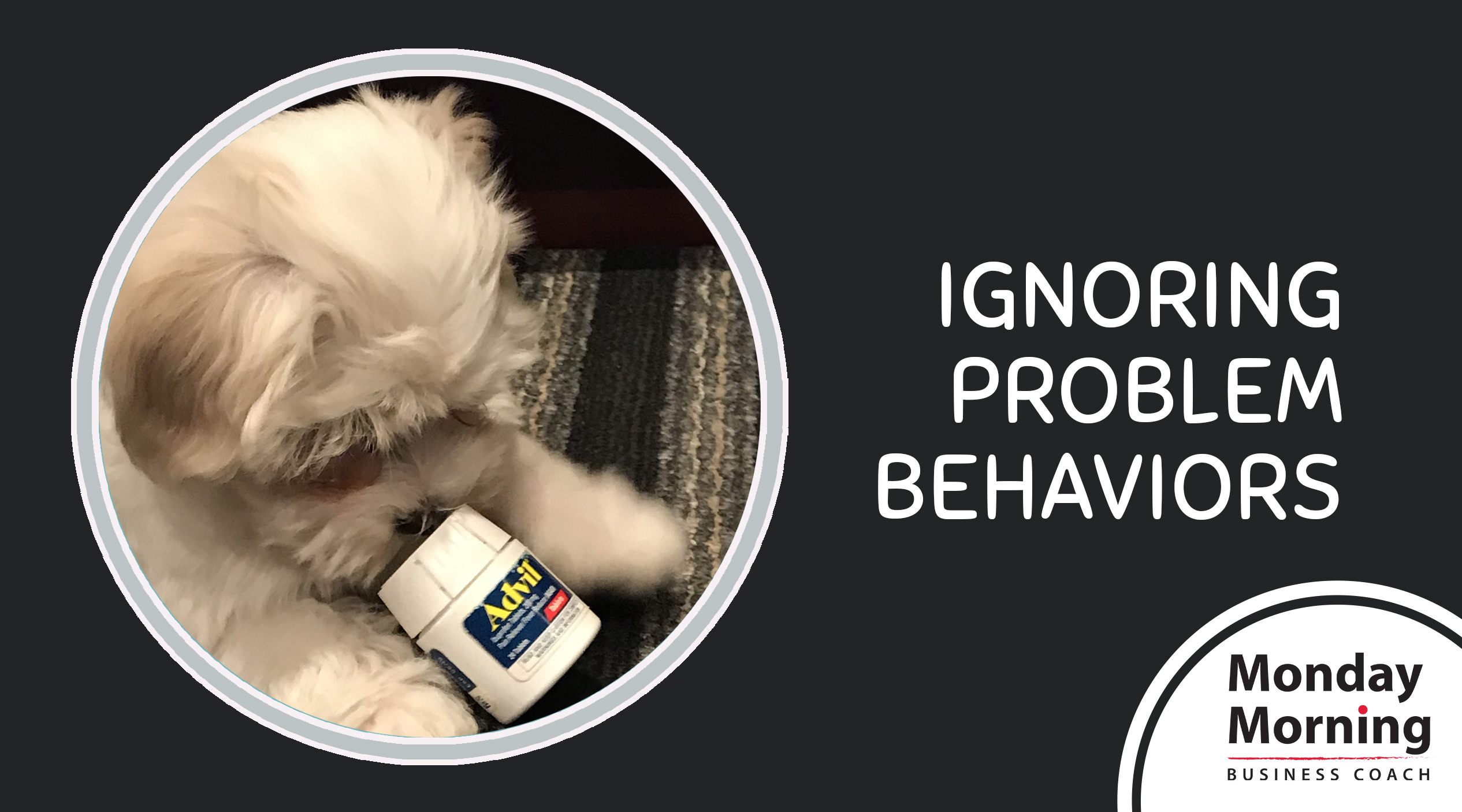The past two weeks, we’ve been sharing a series called What Puppy Training Can Teach You About Leading and Managing, and last week we talked about Rewarding the Right Behaviors.
This week, we’re talking about another powerful learning that leaders and managers can take from puppy training—ignoring challenging behaviors unless they’re creating other problems.
What we’ve discovered about this ignoring thing is that it’s much, much harder than one would expect. We’ve all become quite adept at noticing what’s wrong and reacting to it either verbally or nonverbally—neither of which is ignoring it.
Let’s look at a common dynamic people get into with their new puppy, and while doing exactly what they believe will be effective, they instead are rewarding problem behavior.
When learning to walk on a leash, a puppy will commonly pull on their leash to run ahead or go in a different direction. Most of us instantly pull back to “gain control;” so the puppy—who believes you are playing—gets engaged by the pulling and pulls harder because it feels a bit like tug. And, puppies love tug.
Most of us will do this over and over and, without intending to, we’ve now taught them that when they pull on their leash, we are playing tug and, therefore, they should pull harder.
So, what do you do?
The only way to communicate how to walk on a leash with a puppy is to reward the right behavior and ignore the problem behavior which, in this case, means that when they pull, you stand still and do nothing. The puppy gets to walk when the leash is somewhat loose.
Now this is really hard to do because, at first, every time they pull, you need to stop, stand motionless (they get nothing for pulling) until they move in a way that puts some slack in the leash. For us humans, this is both frustrating and boring. It will take a bit of time (and you may have to repeat it from time to time when they forget); yet, once they learn that with the right behavior they get to move forward, you will have a dog who walks easily on a leash.
The same thing happens with people you’re leading and managing.
So, using our example from last week of the new employee who is so excited about his role and often interrupts when others are speaking, we’d recommend you ignore that behavior. Look down, write a note to yourself, continue on with whatever you were saying. Ignore it.
At the same time, use the tool we described last week and watch for those times he does the “right” behavior—he’s respectful to colleagues when they’re speaking, actively listens, and waits until they have finished to give his thoughts. When that happens, you say warmly, “Thanks for waiting until they finished speaking. I know you’re excited to share your point of view!” And then continue on with the conversation.
Ignoring means not getting mad,
making a face, or rolling your eyes.
Ignoring interruptions, like ignoring the puppy, is focused on not engaging around the problem behavior but only around steps to the successful behavior.
New behaviors are adopted when they’re recognized and rewarded. Punishment and criticism will lead to compliance which is different then true growth. And, if he was doing something truly egregious, you would certainly need to intervene in the moment and you would expect a change to occur.
This week, explore ignoring an irritating but not destructive behavior while watching for a positive behavior that you would like to see expand in its place, and rewarding that.
in real life, so if you’d like support in
creating greater success in your team,
contact us today.

